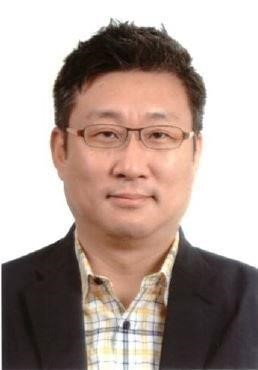September 2019 - In this interview, Peter Kim, of Telecommunications Technology Association (TTA), discusses the findings from a recent survey about the adoption of oneM2M standards and oneM2M's history in the Korean market.
 Q. Peter, let us begin with an overview of TTA and your role in the organisation.
Q. Peter, let us begin with an overview of TTA and your role in the organisation.
PK: TTA is a Standards Development Organisation (SDO) based in Korea. Established in 1988, TTA supports the creation and dissemination of ICT standards. TTA also provides testing and certification services for ICT related technologies.
TTA is involved in number of collaborative activities with other international standards bodies around the world. oneM2M is one of these initiatives. It is a major partnership project that TTA helped to establish with other SDOs to address the IoT market. From initial concept to actual creation of oneM2M, TTA has played a major role. We continue to be proactive in establishing and propagating oneM2M standards in Korea and around the world.
My role at TTA is to oversee and operate any and all oneM2M related activities. My responsibilities include member support, budgeting and promotional activities (exhibiting, sharing via social media and distributing brochures, etc). I attend the oneM2M Steering Committee and its Subcommittee meetings on behalf of TTA to represent the views of our members as well as TTA. I also attend the oneM2M Technical Plenary (TP) meetings to support our member companies as well as gathering and exchanging information. The TPs provide a good venue to seek collaboration opportunities with oneM2M members outside TTA.
I have recently taken on a leadership position at oneM2M. My responsibilities as a Regional Vice Chair are to promote the oneM2M brand and standard within the Korean region. I also contribute information on oneM2M deployments in Korea for sharing across the oneM2M community. This not only helps
propagation of the oneM2M standard to other regions, but also increases oneM2M's presence in the Internet of Things (IoT) market.
This is just a fraction of what I do at TTA.
Q. What is the history behind oneM2M in the Korean market and how is the standard being used?
PK: If I am not mistaken, the LGU+ Kids watch might have been the world's very first oneM2M based product that was introduced in the market, back in 2016. It was a oneM2M based product made in collaboration with LGU+, ZTE and KDDI.
Since then, 40 products and services based on the oneM2M platform were created by 26 companies in Korea. This includes oneM2M based open source software Mobius, Oasis SI and nCube, which is a very widely used open source software based on oneM2M.
Additionally, three smart city pilot projects based on oneM2M technology in Busan, Goyang and Daegu were sponsored by the Korean government in 2015. The Busan smart city pilot focused primarily on school zone safety whereas, the Goyang smart city pilot project dealt with smart eco-city services. In the case of the Daegu smart city pilot, there was an emphasis on healthcare services for elderly people and for pregnant women.
Currently, there are several smart city, railway and more general IoT projects in preparation. Our members are actively participating from the planning phase to include oneM2M as the base IoT platform technology.
Q. TTA recently conducted a survey of organisations using the oneM2M standard. What are the high-level findings from this work?
PK: Through a collaborative survey with other oneM2M members, we put together a dataset of oneM2M deployments around the world. This is available on the oneM2M web site.
At first, I was surprised to find that there were more deployments in the market than I originally expected. Based on discussions that I had with our experts, we believe this is due to the fact that oneM2M specifications are easily accessible and can be downloaded by organisations that are not enrolled as oneM2M members, via the public website.
The advantage of this is that oneM2M can be used by those who need it without actually participating in the standardisation activity. After all, many small and medium sized companies don't have enough resources to allocate towards standardisation. However, the downside side to this is that it is very difficult to keep track of where, who and how the oneM2M standard is being used from the perspective of those who operate the oneM2M partnership project.
The tracking of downloaded specifications is a very important piece of information in measuring how well we are promoting oneM2M. Within my role as the oneM2M MARCOM Vice Chair, I will be making a proposal to gather more in-depth information about who is downloading the specifications and the reasoning behind this. This will be one of the ways in which we can become more engaged with organisations that are accessing the standard and deploying oneM2M solutions.
Just as tracking usage data is a key indicator for promotional purposes, having knowledgeable experts who are involved in the process of implementing oneM2M solutions is even more valuable. Several experts in Korea, who are active members of oneM2M, are doing just that. These include Professor Andrew Han at Hansung University, Seung Myoung Jeong at Korea Electronics Technology Institute (KETI) and YoungJin Na at Hyundai Motors. In future Executive Interviews, we will hear how their organisations are applying the oneM2M standard. I would like to express my sincere appreciation for their diligent work toward propagation of the oneM2M standard in Korea.